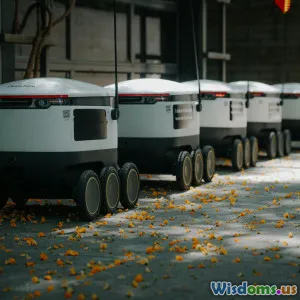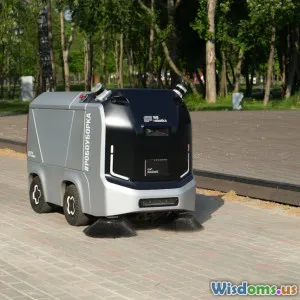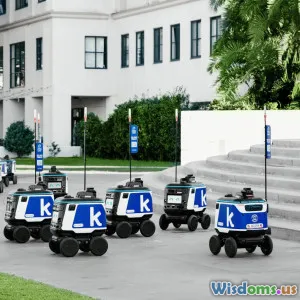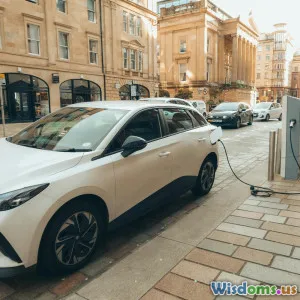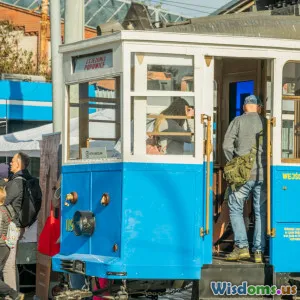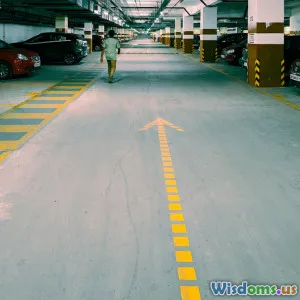
How AI is Shaping Public Transit
7 min read Explore how AI revolutionizes public transit with smarter routes, safer rides, and improved commuter experiences worldwide. (0 Reviews)
How AI is Shaping Public Transit
Public transportation forms the backbone of urban mobility, connecting millions to work, school, and leisure daily. Yet, challenges such as overcrowding, delays, unpredictable service, and safety concerns have hampered its reliability and attractiveness for decades. Today, artificial intelligence (AI) emerges as a transformative force, reshaping public transit systems globally to be smarter, more efficient, and rider-centric than ever before.
The Dawn of AI-Driven Public Transit
Imagine buses that adjust their routes dynamically based on real-time traffic and ridership patterns, or trains that self-monitor and predict maintenance needs before breakdowns occur. AI-powered systems harness vast data streams—from sensors, cameras, and user apps—to create a responsive transit ecosystem. This marks a paradigm shift, replacing rigid schedules and reactive maintenance with adaptive, data-driven management.
Smarter Routing through Real-Time Data
Traditional transit routes often fail to accommodate shifting commuter flows or road conditions, resulting in unnecessary delays or overcrowded vehicles. AI algorithms analyze real-time traffic patterns, passenger demand, and weather conditions to optimize route planning on the fly.
For example, Singapore’s Land Transport Authority introduced an AI-driven bus-lane management system that prioritizes buses through dynamic signal adjustments. This system reduced bus travel times by up to 10% during peak hours. Meanwhile, cities like Helsinki leverage AI to offer on-demand transit shuttles that match capacity with rider demand, cutting wait times and operational costs.
Predictive Maintenance for Safety and Reliability
Unplanned breakdowns, often disruptive and costly, have traditionally dogged public transit. AI empowers a shift from scheduled to predictive maintenance by anticipating component failures before they happen.
The Bay Area Rapid Transit (BART) system employs AI models analyzing sensor data across their fleet to forecast issues such as wheel wear or electrical malfunctions. This allows preemptive interventions that significantly reduce service interruptions. According to BART officials, AI-based predictive maintenance has improved uptime by approximately 15%, translating into smoother commutes.
Enhancing Rider Experience via Personalization
AI also reshapes how passengers interact with transit systems. Mobile apps incorporating machine learning offer personalized travel advice, suggesting the fastest or least crowded options tailored to individual preferences.
In New York City, the Metropolitan Transportation Authority (MTA) introduced an AI-powered chatbot in its app that provides updates, disruption alerts, and navigational assistance. Weighted with historical data and user feedback, this virtual assistant enhances accessibility and convenience, creating a more inviting rider environment.
Autonomous Vehicles and Public Transit
Perhaps the most heralded AI application is within autonomous buses and shuttles that could radically redefine last-mile connectivity.
Autonomous Shuttles in Action
Several cities showcase pilot programs deploying self-driving shuttles as feeders to major transit hubs. For instance, Helsinki’s RoboBus line successfully transported passengers along a 1.3-mile route through mixed traffic—without human drivers. These shuttles use AI for object detection, path planning, and real-time decision-making, ensuring safety and efficiency.
Overcoming Challenges
While promising, autonomous transit faces hurdles such as regulatory approvals, cybersecurity risks, and public trust. AI advances accelerate capabilities, but widespread adoption requires consistent safety records, cost reductions, and integration with existing systems.
AI and Transit Equity and Sustainability
Beyond operational improvements, AI has the potential to foster equitable access and environmental benefits.
- Equity: By analyzing demographic and mobility data, transit authorities can identify underserved neighborhoods and optimize service allocation accordingly. AI helps synchronize public transit expansion with social inclusion goals, ensuring all populations gain mobility benefits.
- Sustainability: AI-driven energy management systems optimize electric bus charging and route selection to reduce environmental footprints. Additionally, smoother transit operations aided by AI minimize idling and emissions—supporting cleaner cities.
Industry Voices: Insights on AI’s Impact
Jamila Turner, Director at Transit Tech Innovators, notes, "We are witnessing the intersection of AI and public transit creating unprecedented opportunities to rethink urban mobility. It’s about delivering services that are not just smart but deeply human-centered."
Similarly, Dr. Chen Li, a transport AI researcher, emphasizes, "The scalability of AI systems means even mid-sized or developing cities can leapfrog traditional infrastructure constraints, enabling smarter, effective transit from the start."
Conclusion: A Transit Future Powered by AI
Artificial intelligence is not just an incremental upgrade—it's revolutionizing public transit’s foundation. Through dynamic routing, predictive maintenance, personalized experiences, and autonomous operations, AI transforms commutes from daily stressors into seamless journeys.
As more cities invest in intelligent transit, real-world evidence reveals significant gains in efficiency, safety, equity, and environmental impact. The key lies in thoughtful implementation, fostering public trust, and continual innovation.
Public transit shaped by AI promises not simply to move people but to redefine how we connect, care for urban environments, and imagine a future where mobility is as adaptive and intelligent as the communities it serves.
References:
- Singapore Land Transport Authority Reports (2022)
- BART Predictive Maintenance Data (2023)
- Helsinki RoboBus Pilot Documentation (2021-2023)
- New York MTA AI-powered App Launch Insights (2023)
For commuters, policymakers, and technologists alike, embracing AI in public transit signals not just innovation—but a smarter, cleaner, fairer way forward.
Rate the Post
User Reviews
Popular Posts












